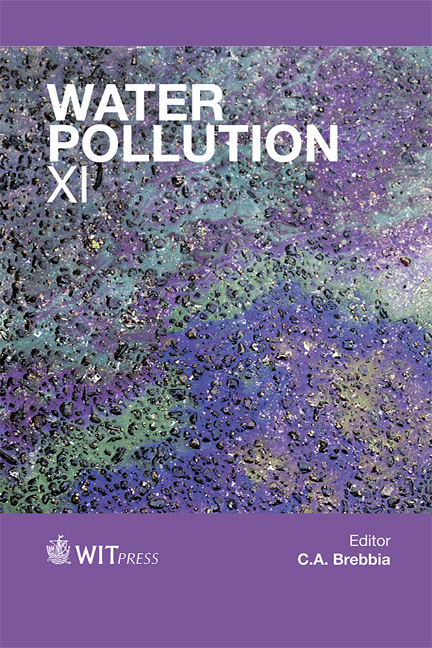Bacterial Loading During Flooding: A Case Study From 2010 On The Bi-national Rio Grande
Price
Free (open access)
Transaction
Volume
164
Pages
12
Page Range
27 - 38
Published
2012
Size
664 kb
Paper DOI
10.2495/WP120031
Copyright
WIT Press
Author(s)
A. Torres, K. Tobin & B. Wilson
Abstract
Escherichia coli (E. coli) bacteria loadings were tracked during the summer 2010 major flood event of the Rio Grande using the Soil and Water Assessment Tool (SWAT) hydrologic model. This bi-national watershed spanning Texas and Mexico has loading from urban point source sewage outfalls and non-point source loadings from rangeland and agricultural areas located upstream of a urban centre (Laredo/Nuevo Laredo). Flood events represent a high risk for human health since bacterial loadings increased during the flood. Sampling during flood conditions is dangerous and therefore there are comparatively few studies that have examined bacterial values in rivers during flood events. Therefore, the safest way to obtain bacterial concentrations during a flood event is through hydrologic modelling. Significantly, the initial assumption of constant bacterial loading within the basin is not valid. As demonstrated by previous research there is a strong linear correlation between streamflow and E. coli values. The outcomes of this study will provide guidelines for users of the SWAT model to predict bacteria fate and transport during future flood events and will therefore assist communities in improving management of their water supplies. Finally, use of satellite precipitation data as primary input for the SWAT model potentially extends the findings of this study to areas of the developing world that lack ground monitoring of precipitation. Keywords: bacteria, SWAT, flood, sewage, Texas, Mexico, Rio Grande.
Keywords
bacteria, SWAT, flood, sewage, Texas, Mexico, Rio Grande





